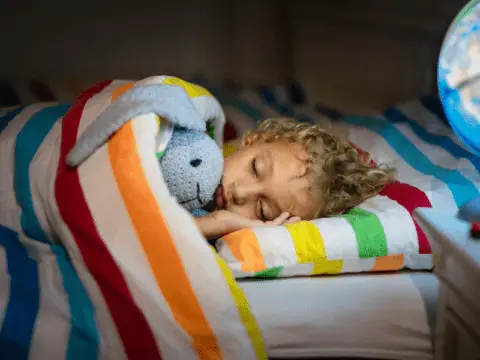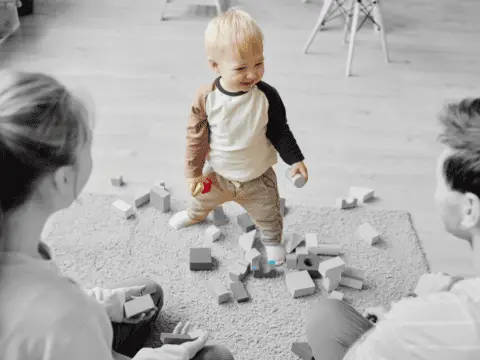What is applied behavior analysis in simple terms?
Applied Behavior Analysis therapy is a special kind of therapy that helps kids learn new skills and improve their behavior.
Just like how we go to school to learn new things, ABA therapy is a way for kids to learn and practice new skills. A therapist who is trained in ABA will work with the child to teach them things like how to talk, play with others, and do daily activities like brushing their teeth or getting dressed.
The therapist will use different techniques to help the child learn, such as giving them rewards or positive feedback when they do something good, or helping them break down a task into smaller steps that are easier to do. Over time, with lots of practice, the child can learn to do these things on their own and become more independent.
ABA therapy is a way to help kids with autism or other challenges learn important skills and behaviors, so they can feel more confident and successful in their daily life.
What does ABA therapy stand for?
ABA therapy stands for Applied Behavior Analysis therapy. It’s a type of therapy that focuses on using behavioral techniques to teach and reinforce positive behaviors and skills, while reducing negative behaviors. It involves breaking down skills into small steps and using positive reinforcement to encourage progress. ABA therapy can be used to help individuals with autism spectrum disorder (ASD) improve their communication, social skills, and daily living skills.
What is an ABA report for a child with Autism?
An ABA (Applied Behavior Analysis) report for a child with autism typically includes detailed information on the child’s behavior, progress, and goals for future sessions. The report may include the following components:
- Introduction: This section provides an overview of the child’s diagnosis and background information, including any relevant medical or developmental history.
- Assessment results: The report may include the results of any assessments conducted to identify the child’s strengths, weaknesses, and areas for improvement. This could include assessments of communication skills, social skills, and adaptive behavior.
- Behavior plan: The behavior plan outlines the specific behaviors that the child is working to improve, along with the strategies and interventions that will be used to achieve these goals.
- Progress report: The progress report summarizes the child’s progress towards their goals over a specified period of time. This may include data on the frequency and duration of target behaviors, as well as any changes in the child’s overall functioning.
- Recommendations: The report may include recommendations for future interventions or modifications to the behavior plan based on the child’s progress and needs.
- Collaboration: ABA reports may also include information on collaboration with other professionals, such as speech therapists, occupational therapists, and teachers.
Overall, an ABA report for a child with autism provides a detailed summary of the child’s behavior, progress, and goals for future sessions. The report is often used to communicate with caregivers, educators, and other professionals involved in the child’s care in order to ensure a collaborative and effective approach to treatment.
What is a behaviour plan?
A behavior plan is a plan that therapists create to help your child learn new skills and behaviors.
The behavior plan starts with identifying specific behaviors that you want to work on and setting goals for your child to achieve. These goals may include things like learning to communicate more effectively, following instructions, or reducing problem behaviors.
Once the target behaviors and goals are identified, a plan will be created that outlines the specific steps that will be taken to help your child learn these skills. This may include using positive reinforcement, breaking down complex behaviors into smaller steps, and using prompts or cues to guide your child towards the target behavior.
Data will be collected on your child’s progress and the plan will be adjusted as needed to ensure progress towards the goals that have been set. The behavior plan is a collaborative effort between the therapist, the parents, and anyone else involved in your child’s care, so everyone will work together to ensure that the plan is tailored to your child’s individual needs and abilities.
The overall goal of the behavior plan is to help your child learn new skills and behaviors in a positive and supportive environment. The team will work together to create a plan that is effective, practical, and achievable for your child, and will provide ongoing support and guidance every step of the way.
What behaviors and goals that may be included in a behavior plan for autism?
Here are examples of behaviors and goals that may be included in a behavior plan for a child with autism:
- Communication: A goal may be for the child to learn to communicate more effectively, such as using words or gestures to request items or express their needs. A behavior plan may include strategies such as using visual aids, modeling appropriate language, and providing positive reinforcement when the child uses language to communicate.
- Social skills: A goal may be for the child to improve their social skills, such as making eye contact or taking turns in a conversation. A behavior plan may include strategies such as role-playing social situations, using social stories to teach appropriate behavior, and providing positive reinforcement when the child demonstrates appropriate social skills.
- Self-care: A goal may be for the child to improve their ability to take care of themselves, such as dressing themselves or brushing their teeth. A behavior plan may include strategies such as breaking down self-care tasks into smaller steps, providing visual prompts or cues, and providing positive reinforcement when the child completes the task.
- Problem behaviors: A goal may be for the child to reduce problem behaviors, such as aggression or self-injury. A behavior plan may include strategies such as identifying the triggers for the behavior, teaching replacement behaviors, and providing positive reinforcement when the child demonstrates appropriate behavior.
These are just a few examples of the types of behaviors and goals that may be included in a behavior plan for a child with autism. The specific behaviors and goals will vary based on the child’s individual needs and abilities, and the behavior plan will be tailored to meet those needs in a positive and supportive way.









